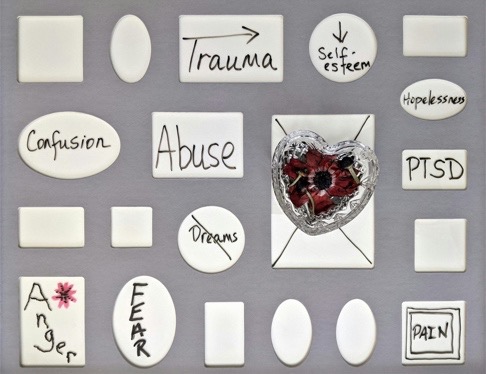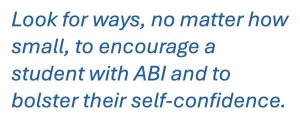Many lower level students are living with the effects of Acquired Brain Injury (ABI) from trauma, such as concussions, infection, and strokes. They struggle, while other students are learning and progressing. No matter how many times and ways we cover the same material, do the same activities, these struggling students still battle and labour to learn. It’s a situation of snakes and ladders. One day they seem to get it, have some sort of breakthrough, only to return to their old patterns of difficulty. Teacher and student have to begin all over again.
Category Archives: Trauma
Mitigating the Effects of Trauma

“Two of my brothers were killed in the war in Ukraine.”
“My family’s houses were destroyed in Palestine”
“I have PTSD from a trauma in my homeland.”
“There is fighting in my street back home, and I can’t reach anyone.”
“My mother was sent to a re-education centre for being a Uyghur.”
“My husband and I and our two sons were put on a kill list, so we had to flee my country.”
“My sister is sick, and I cannot go back and see her before she dies.”
Continue readingTrauma in the Classroom (Part 1)
Guest Contributors: Allyson Eamer, Amea Wilbur, Katie Crossman, Jennifer Allore

Maintaining Balance & Thriving During COVID-19

What can EAP/ESL/EFL instructors do if they are laid off or have much reduced hours during COVID-19? This question concerns most of us. Like many others, I was laid off. I believe that with persistence and creativity we can stay positive. As examples to stimulate discussion, here are several things that I have found beneficial.
Trauma + Second Language Learning = Alternative Pedagogy

Imagine you are in a doctor’s office being told that you have a serious, life threatening condition. Blood races through your veins, heartbeat pounds between your ears, breath is shallow, and you can feel your clothes sticking to your skin. Your body is in a heightened state of arousal. Do you recall the term “fight/flight/freeze” from science class? This is it — you are in what is called “survival mode”. By the time you get home, you realize how many questions needed to be asked but were forgotten while in the doctor’s office, and you barely remember what was said. This is an example of the psycho-physiology of trauma.
If you can relate to this scenario, (or one like it), then you can understand how difficult it is to function normally in this heightened state of arousal. It’s understandable that this state of anxiety can occur during a traumatic or highly stressful experience, but what you may not be aware of is that it can also persist for long periods after the traumatic event.
Why is this important now? With the refugee influx coming into Canada, you may encounter a surge of students in your classroom displaying symptoms related to post traumatic experiences like violence, displacement or loss, which will have an impact on how they learn. As a teacher, you may see a trend of problematic behaviours or students’ lack of progress in the traditional learning environment. Continue reading

